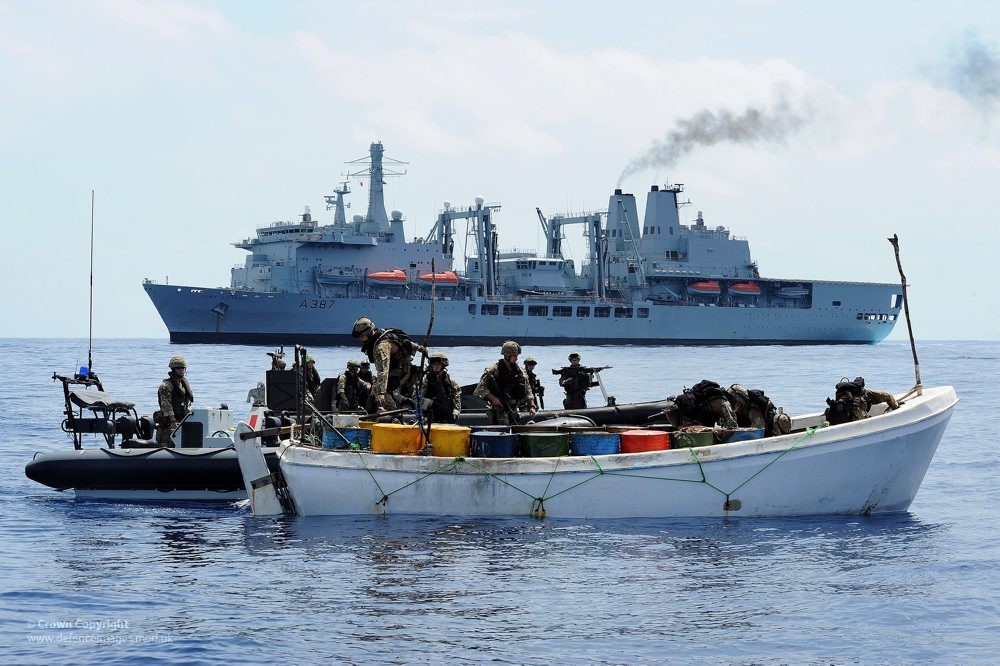Code red for small tanker operators
An illicit fuel market in Southeast Asia continues to drive hijackings and oil cargo thefts

The hijacking of the Orkim Harmony fuel tanker on June 11 underlines the operational, financial and security threats facing small tanker operators in South East Asia. High demand for illicit oil and a well-established black market will continue to drive attacks in the coming year. In the absence of a stronger law enforcement response, 2015 is set to see a record number of hijackings in the region.
The Orkim Harmony incident was the most serious hijacking in the first six months of 2015 in terms of its duration and the threat posed to crew. The attack was orchestrated by a group of 13 armed pirates, who were able to board the vessel quickly without alerting the crew, immediately take over the bridge, disable the vessel’s Automatic Identification System, repaint the hull and alter the vessel’s name to avoid detection. The vessel was located after eight days on June 19 and eight pirates were detained after attempting to escape. Pirates shot one crew member in the leg during the hijacking, but the cargo was reported to be safe and the rest of the crew unharmed.
The operational impact of the incident was more significant than usual, taking one of Orkim Ship Management’s 11 vessels out of operation for at least nine days. At average weighted earnings for tankers, this could represent up to $270,000 in losses. The incident was the second for the company in a week, after its vessel Orkim Victory was hijacked and emptied of 770 metric tonnes of oil cargo off the east coast of Peninsular Malaysia on June 4.
“2015 could see the highest annual rate of oil cargo thefts ever recorded in Southeast Asia”
Threat downplay
Malaysian authorities have since downplayed the hijacking threat and denied reports of potential insider involvement at the company, but the recent incidents clearly illustrate operators’ vulnerability to business disruption in the region and potentially higher insurance costs in the future.
The hijacking also highlights the importance of preventative tactics such as regular anti-piracy training and procedures for crew. Reports that pirates were able to take full control of Orkim Harmony without an alarm being issued suggest the crew were inadequately trained in standard watchtower procedures and therefore likely unable to implement evasive anti-piracy measures, which could have mitigated the attack.
Malaysian authorities also criticised Orkim for failing to report the vessel missing until 10 hours after the initial loss of contact, delaying recovery efforts. According to the captain, the eight-day period in pirate captivity caused significant psychological and physical stress for him and his crew. All 22 crew were threatened with violence and one was shot in the thigh on resisting orders, demonstrating pirates’ willingness to use of potentially deadly force to subdue crew. This incident and the killing of a crew member during a hijacking off the coast of Pulau Aur in December 2014 demonstrate the serious physical risk pirates can present to crew on hijacked vessels.
Despite the rise in hijackings and oil cargo theft, the majority of maritime incidents in Southeast Asia comprise robberies of anchored and underway vessels. According data from the PGI Risk Portal, hijackings in Malaysian and Indonesian waters made up approximately 11% of total maritime incidents in the two countries during the first six months of 2015. Hijackings in the region since April 2014 have followed a common pattern, and most cases have concentrated on congested areas around the Malacca and Singapore Straits, which present the best opportunities for pirates to board tankers with low freeboards. Pirate groups generally consist of five to ten men armed with knives and/or guns, and crew members are normally detained for the duration of the attack. Hijackings typically last from several hours to overnight, depending on how quickly the attackers are able to siphon fuel cargo onto secondary vessels.
Counting the costs
The operational and financial losses in the Orkim Harmony attack are consistent with trends observed for hijackings in Southeast Asia during this period. PGI has recorded eleven hijackings in these waters in the first six months of 2015, adding to 14 hijackings targeting oil tankers since April 2014. The total value and amount of siphoned oil cargoes is unknown, but at least 16,770 metric tonnes of fuel has been lost, likely amounting to more than $10m. If current trends continue, 2015 could see the highest annual rate of oil cargo thefts ever recorded in Southeast Asia.
Strong demand for illicit crude products and a black market estimated to be worth hundreds of millions of dollars suggest attacks will continue. Indonesian officials believe around $400m is siphoned off imports through the Singapore-based trading arm of the country’s state-owned oil company Pertamina alone, while corrupt officials and police officers in southern Thailand have also been accused of facilitating oil smuggling, along with other illicit goods. These networks provide criminal syndicates a quick route to feed the product into the market.
Regional authorities vowed to increase patrols to address the hijackings in late June, but have thus far not demonstrated a capacity to dismantle the onshore networks that encourage hijackings. In the absence of greater violence or impact on international trade, hijackings are likely to be seen as a source of local disruption rather than a transnational threat to maritime commerce. As a result, the threat will likely be downplayed by regional governments, although increased publicity, growing financial losses and longer-lasting hijackings will place pressure on regional authorities to address the problem.
Although not currently considered likely, a dramatic shift in pirate tactics, such as a future attack on a larger tanker, could broaden the threat and trigger a change in both the response of regional navies and the level of piracy mitigation measures adopted by shipping companies.
Matthew Parker is managing director of Protection Vessels International, part of British risk mitigation business Protection Group International.